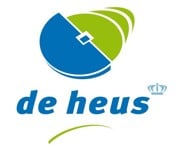Immediate insight into dairy herd ration efficiency
Because rations must produce returns, the ration efficiency on a dairy farm is of key importance. Ration efficiency is expressed in kilograms of fat and protein-corrected milk (FPCM) produced by a dairy herd on the basis of the kilograms of dry matter consumed. From an economic perspective, for a dairy farm it is essential that the production per kilogram of dry matter is as high as possible. Assuming equal costs, this increases the farm's cash flow. Economic calculations involving the assessment of a new farming strategy clearly demonstrate that it is easier for a farm to meet its obligations when, in addition to any growth in the number of cows, it also realises higher production levels.

Because rations must produce returns, the ration efficiency on a dairy farm is of key importance. Ration efficiency is expressed in kilograms of fat and protein-corrected milk (FPCM) produced by a dairy herd on the basis of the kilograms of dry matter consumed.
From an economic perspective, for a dairy farm it is essential that the production per kilogram of dry matter is as high as possible. Assuming equal costs, this increases the farm's cash flow. Economic calculations involving the assessment of a new farming strategy clearly demonstrate that it is easier for a farm to meet its obligations when, in addition to any growth in the number of cows, it also realises higher production levels.
Improved roughage utilisation
The yield per hectare, and the high quality and taste of the roughage are several important pillars for achieving higher feed efficiency. The (added) value of quality roughage for a large part determines the ration efficiency on a dairy farm. This is because more than 50 percent of the total ration consists of roughage. The percentage roughage in the ration in the feed mixer is even higher and consequently is a key determining factor for the total dry matter intake. The total value of the roughage on a farm with one hundred cows is more than € 100,000.
| Number | dry matter intake per day | Dry matter per year | Value (0,15 euro per kg) | |
| Dairy cows | 100 | 14,5 | 530 ton | 79.500 |
| Young livestock | 60 | 6,5 | 142 ton | 21.300 |
| Total | 160 | 661 ton | 100.800 |
Table 1 Value of roughage on a dairy farm with 100 dairy cows and 60 young livestock
Improving feed efficiency starts with limiting ensiling and desiling losses. On average these losses are as follows:
- - Field losses: 0 - 15%
- - Compacting juice losses: 0 – 8%
- - Fermentation losses: 4 - 10%
- - Heating and moulds 0 - 40%
By as much as possible limiting these losses, each kilogram of dry matter retains a higher nutritional value for maintaining the cow and enabling it to produce milk. With its FeedExpert ration calculation program, De Heus provides insight into the feed efficiency of every calculated ration. In addition, the program calculates the actual feed efficiency. This is done on the basis of current data for the loaded ration minus the feed residual, the produced kilograms of milk and the concentrations (Figure 1).
The ration efficiency of a dairy herd should be between 1.35 and 1.55. This means that 1 kg of dry matter in the ration can produce between 1.35 to 1.55 kg of milk.
Factors that can affect the calculation of the ration efficiency:
- - Basic calculation assumptions: calculated versus the situation in actual practice
- - Dry matter percentage in the silages (homogeneous silage)
- - Feed to other animals
- - Feed residuals (estimated on the basis of weighing)
- - Milk supplied to the factory versus total milk produced
- - Limiting ensiling and desiling losses is the first gain.
The result of the ration efficiency differs by farm and is dependent on conditions. The following points influence the result:
- - The percentage ensiling and nutritional value losses
- - The dairy herd's milk production level
- - The quality of the roughage: nutritional value, feed intake and taste
- - The dairy herd's lactation stage
- - The energy and protein coverage
- - The average age of the animals in lactation

Figure 1: When you improve feed efficiency you increase proceeds, while costs stay the same
With an improvement in feed efficiency from 1.25 to 1.35, an average dairy farm with one hundred dairy cows saves approximately 180 to 200 tonnes of roughage. At an average market price of € 40 per tonne, this amounts to € 7,000 per year. Calculating and monitoring your ration efficiency with De Heus' specialist or dealer pays off.

